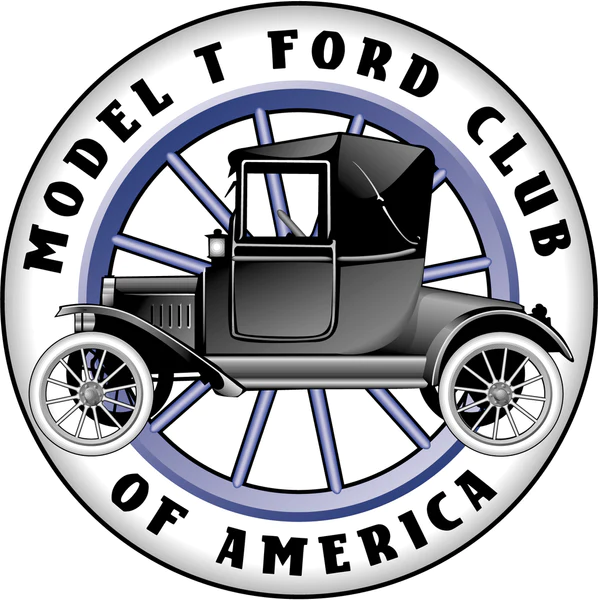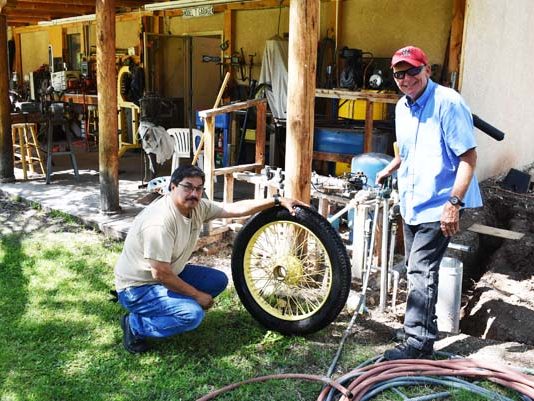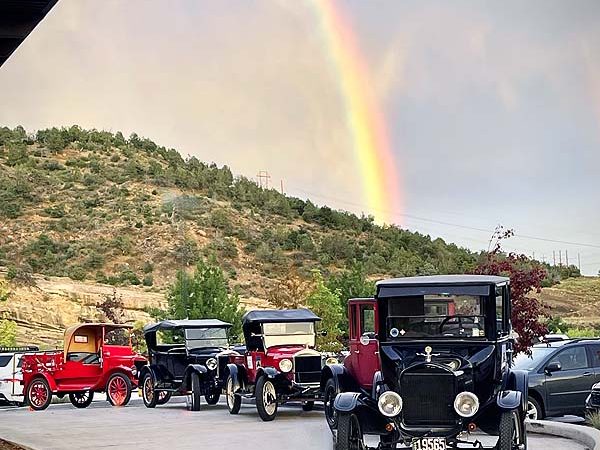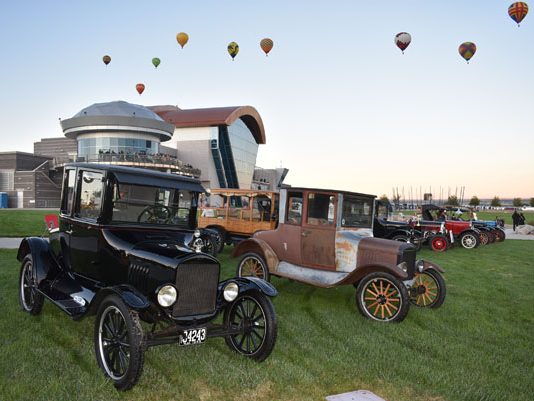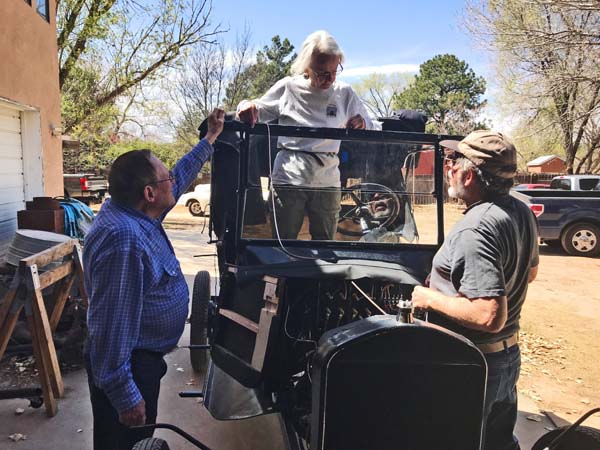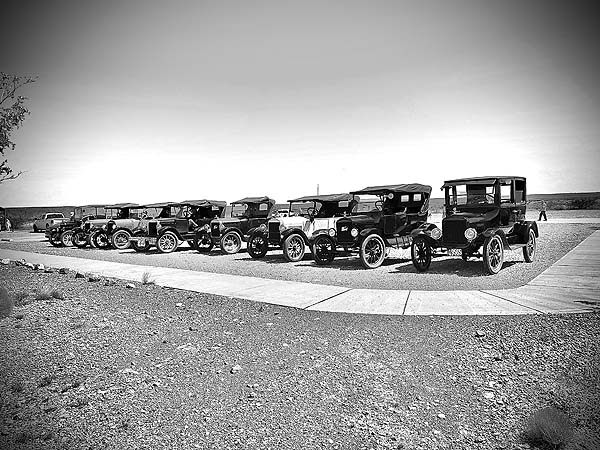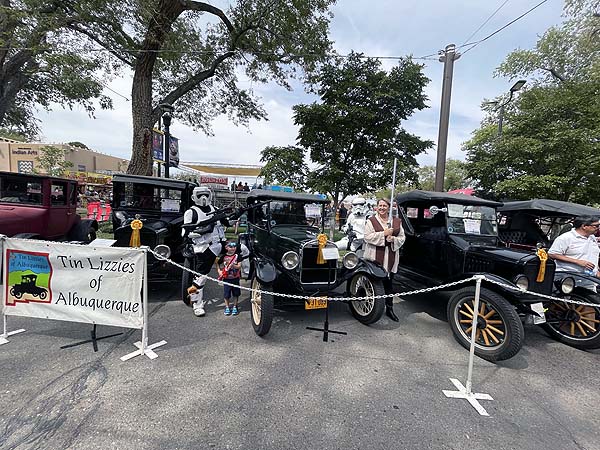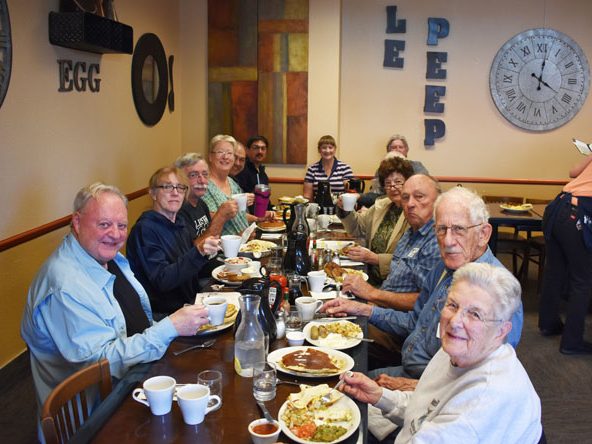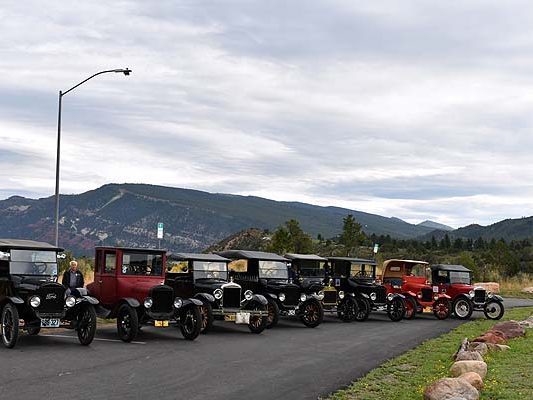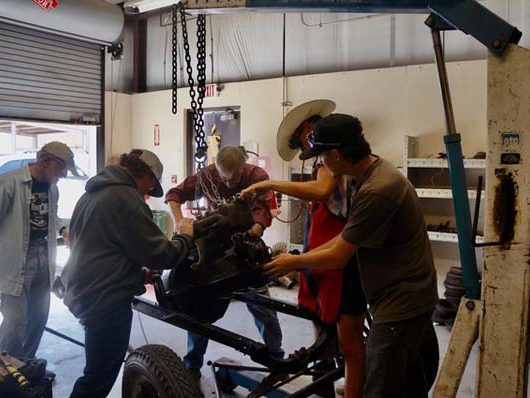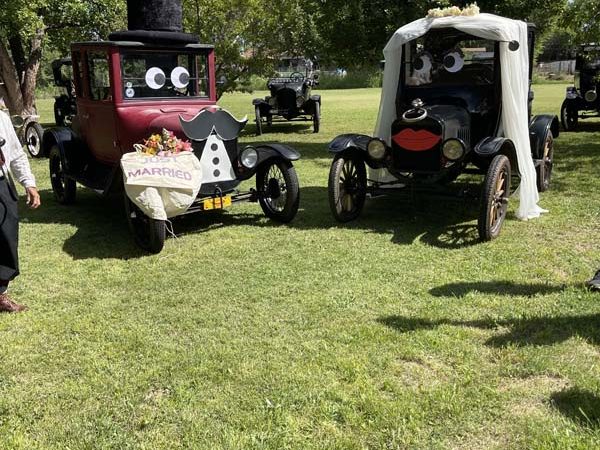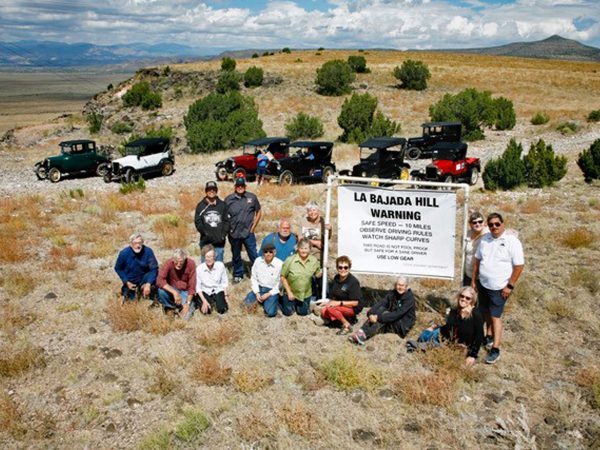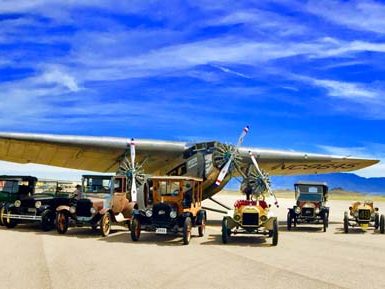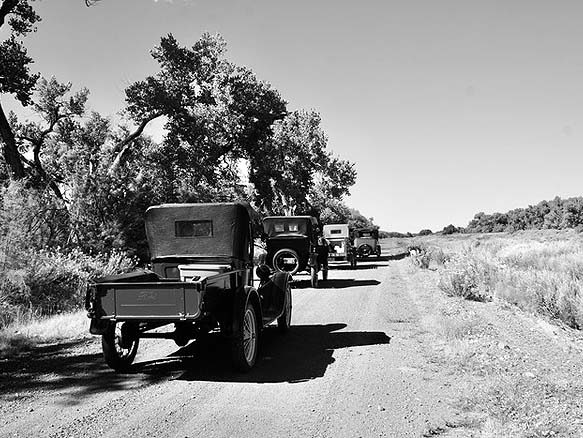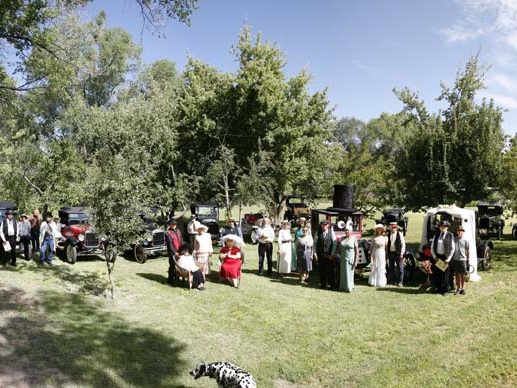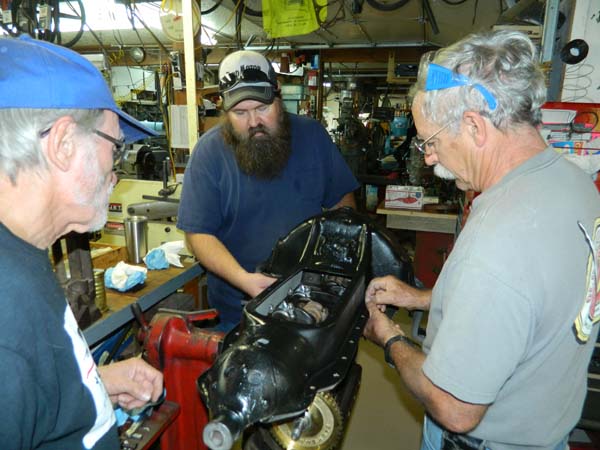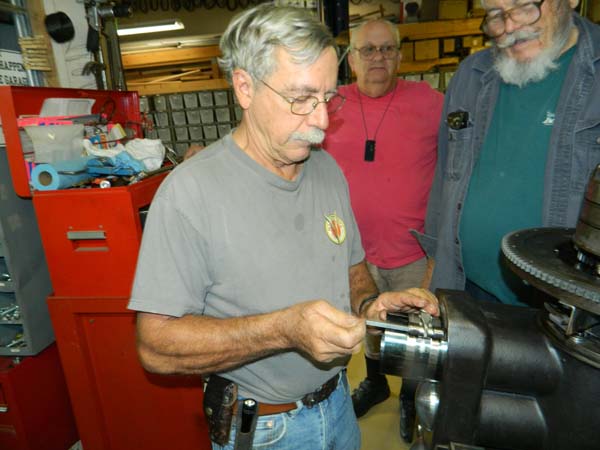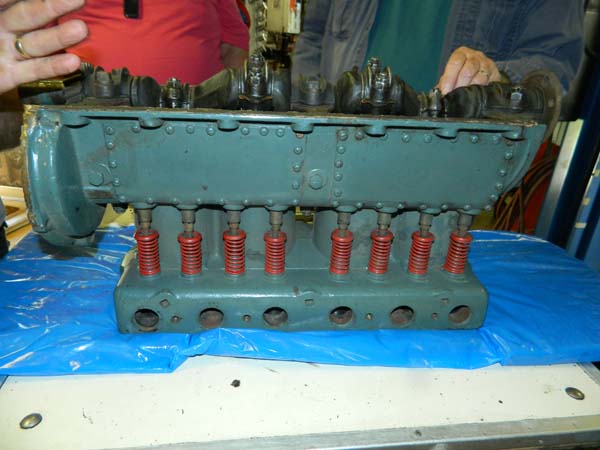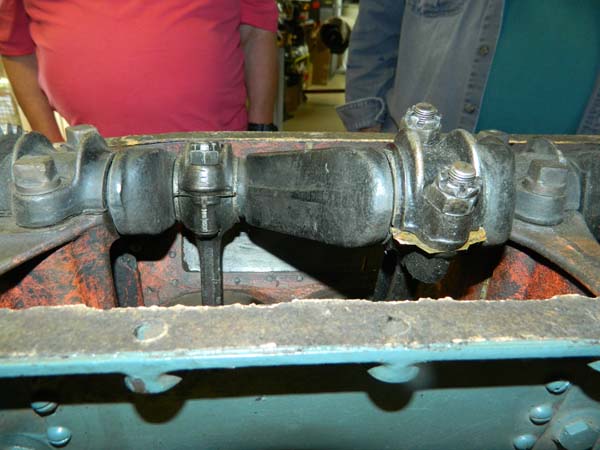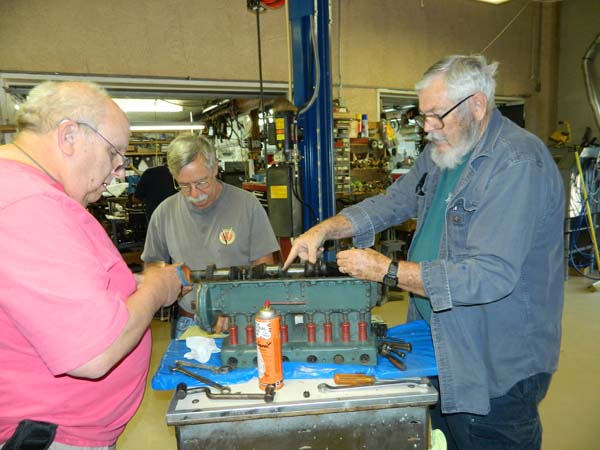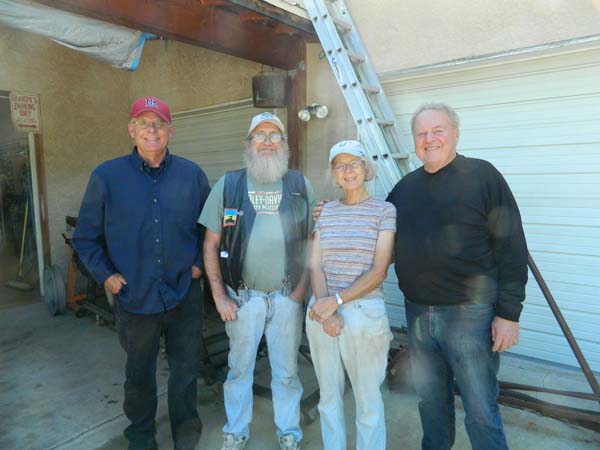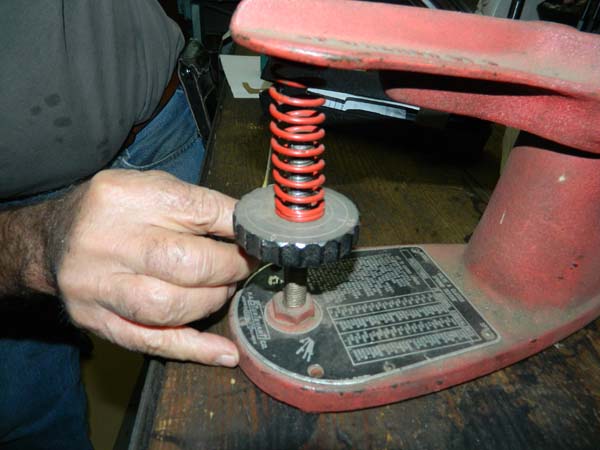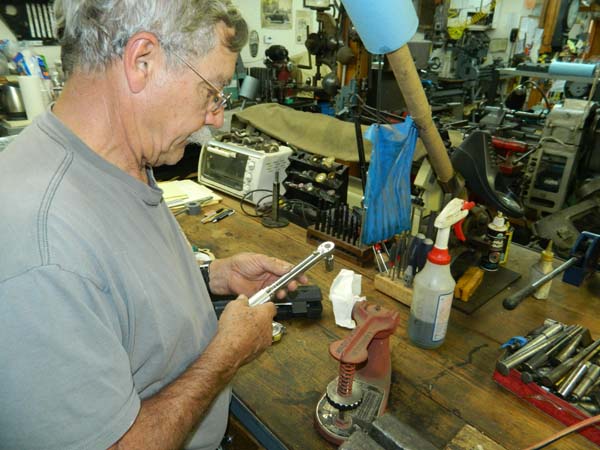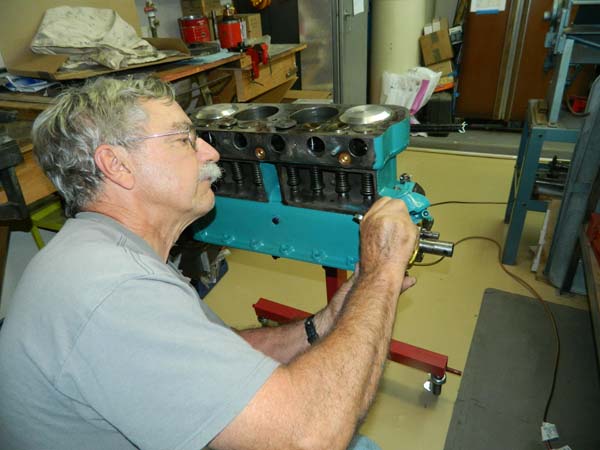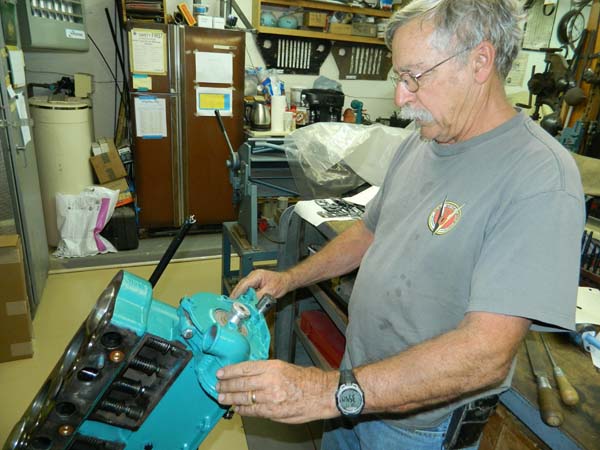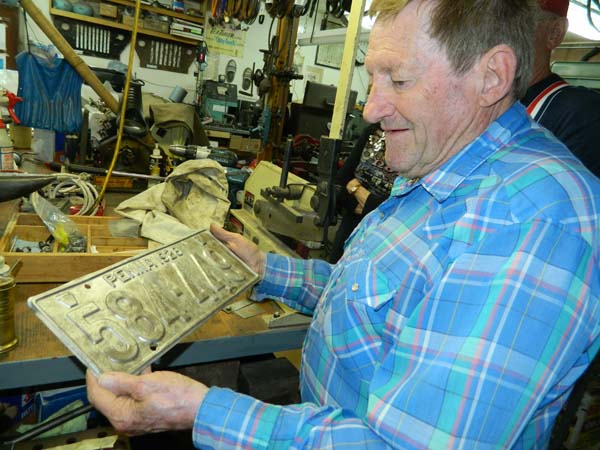There were a few projects at Larry’s garage on this beautiful Saturday, Sept. 17th.
Phil Lance continued work on his 1919 engine and transmission rebuilding project. Phil is building this engine with the intention of installing it in a speedster. It has oil slingers instead of magnets and has high-domed pistons for additional compression. On this day, the hogs head was ready for assembly. Phil recently bought a 1925 runabout and this engine may be installed in that car as an interim measure.
Larry has been rebuilding the engine for the 1915 speedster, the “Lorna Special”. Lorna (Larry’s wife) was concerned that the speedster was burning too much oil and creating clouds of smoke. Larry and Lorna had not opened the engine since they purchased it. Once Larry had the engine apart, he found that there was considerable wear at the rings and the cam gear was ready to fail. In addition, the pistons had been installed 180 degrees out of correct orientation! Larry is now at the stage of reassembling his engine to his normal high standard of accuracy and attention to detail. This engine will be trouble free for a very long time!
Bob Hawk brought a 1928 Pennsylvania license plate for media blasting. The plate will require a bit of patching in the corner as well as a bullet hole before final painting.
Mark brought a open valve engine block that was cast on Oct. 1, 1910 and was serialized as “A-A”. It was used as a demonstration block, probably for a Ford showroom in late 1910 or early 1911. As a demonstration block, four cutouts were made in the lower portion of the block (two on each side), and chamfers were made on the top of the block (on the water outlet side) for a hinged head. This block matches a very similar block (serialized as “H-H”) owned by Dick Fairlee of Redding, CA. Dick purchased his 1910 block from Kim Dobbins of Harbor City, CA.
For Mark’s block, someone, perhaps in the 1930’s or 40’s had pressed this block into use by patching the openings with sheet metal and a lot of screws, and installing a later crankshaft. The goal on this day was to disassemble the engine and check it for wear and potential problems like cracks. Luckily, Larry found the cylinders were a bit cone shaped and showed moderate wear, but it could potentially be corrected with a 0.010″ or 0.020″ oversized boring and pistons. As was expected of an early open valve block, there was no babbitt at the main bearing surfaces on the block. The main bearing and rod babbitted caps were in good condition with at least two shims per cap. It turned out that the block is in very good condition and should be fairly easy to turn into a functional engine again!
At the urging of the wise club members present, Mark has also reconsidered welding cast iron patches on the block. As an alternative, it will be left with the patches as a testament to history of this old engine. Thank you to Larry and the other club members for your assistance!
